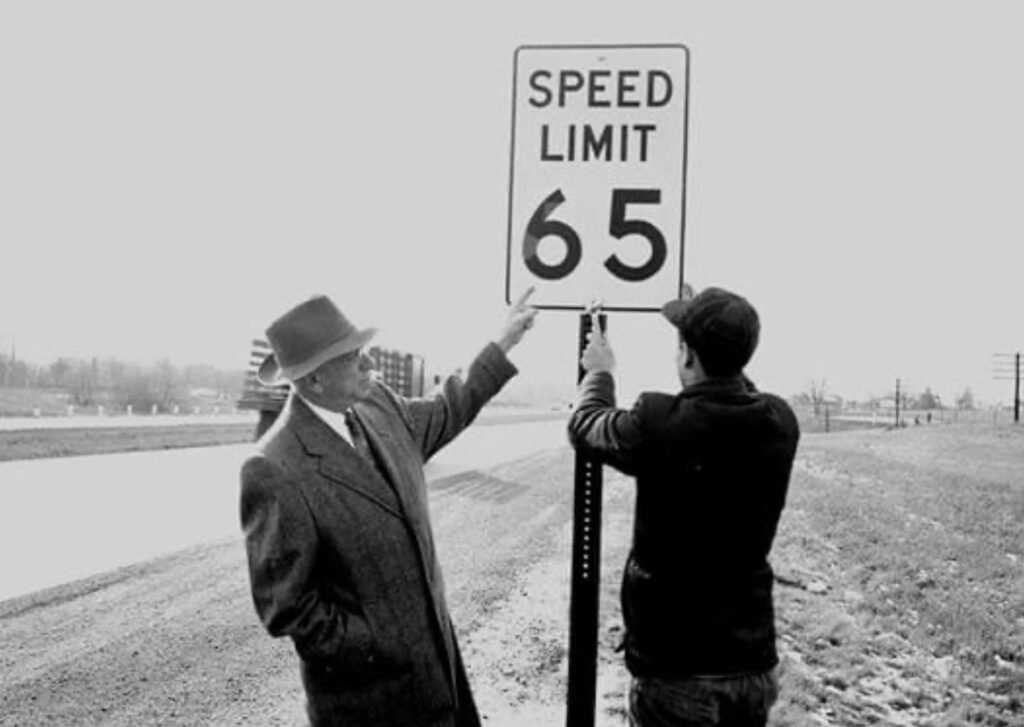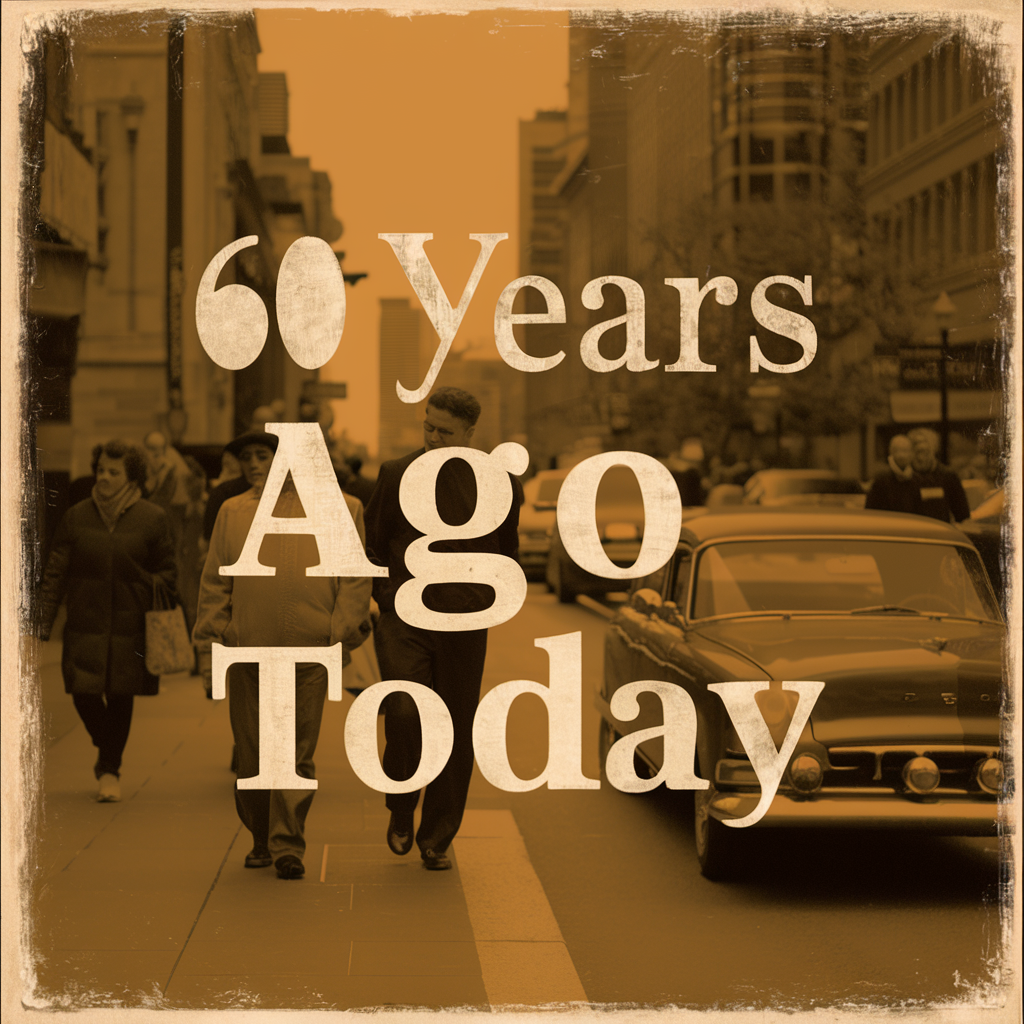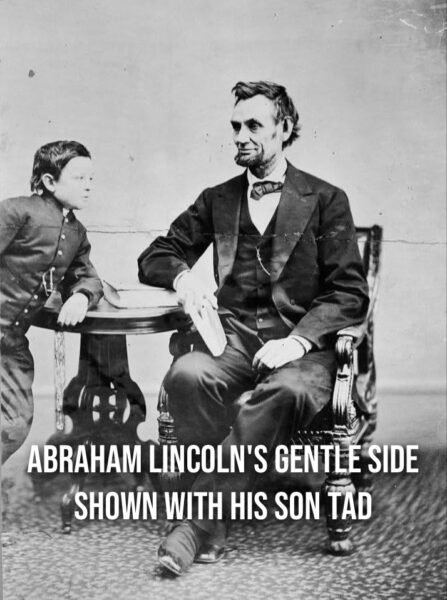In the mid-20th century, the state of Michigan stood at the forefront of automotive innovation and culture, home to the booming Motor City and miles of open highways that symbolized freedom and progress. It was a time when the roar of engines and the open road represented the very essence of American freedom—a freedom that included, until February 3, 1956, the ability for Michigan motorists to determine their own speed limits based on personal judgment of what was “safe and reasonable.”
This practice reflected an era of unparalleled trust in individual discretion on the roads. However, this all changed when Michigan implemented fixed highway speed limits of 65 miles per hour by day and 55 by night, marking a significant shift in road safety legislation. This pivotal moment did not just alter the state’s driving landscape; it signaled the end of an era where the driver’s seat was the throne of personal autonomy.
This decision, driven by increasing concerns over road safety and the evolving dynamics of automotive travel, paved the way for a new chapter in Michigan’s rich automotive history, setting a precedent for the future of traffic regulation.

Background: Michigan Before 1956
Before the landmark year of 1956, Michigan’s roads were vast stages for the display of automotive liberty. The state, known for its deep ties to the automobile industry, was a place where the concept of speed was as unrestricted as the horizon. Drivers took to the highways guided by a principle of “reasonable and proper” speed, a standard that left much to individual interpretation and judgment. This policy reflected an era when cars were becoming faster, but road safety regulations had yet to catch up.
The absence of fixed speed limits meant that Michigan’s highways were realms of personal discretion, where the responsibility for determining safe driving speeds lay firmly in the hands of motorists. This freedom, however, was not without its challenges. As car ownership became more widespread and vehicles became more powerful, the roads grew increasingly crowded, and the limitations of the “reasonable and proper” standard became apparent. The increasing incidence of accidents began to raise questions about the sustainability of such a laissez-faire approach to road safety.
In this context, Michigan’s open roads were a double-edged sword. They symbolized progress and freedom, but also posed significant risks as speeds increased and traffic density grew. The automotive culture of the time celebrated speed and power, but the consequences of this ethos were becoming hard to ignore. The state stood at a crossroads, balancing its legacy as the birthplace of the American automobile against the pressing need to adapt to changing realities of road safety and public welfare.
For more fascinating historical insights and events, explore stories like the first delivery of Coca-Cola to Knoxville in 1919, capturing moments that define our shared past.

The Shift to Fixed Speed Limits
As 1956 dawned, Michigan embarked on a legislative journey that would see the introduction of fixed speed limits – 65 miles per hour by day and 55 by night. This shift was a direct response to the evolving dynamics of road travel, the increasing capabilities of motor vehicles, and a growing awareness of safety needs. The decision to standardize speed limits was both a nod to progress and an acknowledgment of the need for regulation in an age of rapid technological advancement and societal change.
This period of change wasn’t limited to the highways and byways of Michigan or the broader automotive industry. It mirrored transformations in other aspects of American life, including consumer habits and environmental consciousness. A notable parallel can be drawn with the beverage industry, particularly the transition from glass to plastic soft drink bottles in the 1980s. This shift represented not just a change in packaging but a significant turn in manufacturing, consumer convenience, and the environmental footprint of everyday products.
The Era of Glass Soft Drink Bottles in the 1980s
The 1980s marked a pivotal era in the beverage industry, characterized by a significant shift from traditional glass bottles to more practical and lightweight plastic packaging. This transition wasn’t merely about changing materials; it was about adapting to new consumer expectations, enhancing convenience, and addressing growing concerns about sustainability and waste management. Just as Michigan’s implementation of fixed speed limits was a response to the changing landscape of road safety and automotive technology, the beverage industry’s move towards plastic was a nod to evolving consumer behaviors and environmental considerations.
For a deeper dive into this transformative era and its lasting impacts on consumption and environmental policies, explore the insights at The Era of Glass Soft Drink Bottles in the 1980s. This period offers a fascinating glimpse into how innovations in one area can reflect broader societal shifts, much like the changes seen on Michigan’s highways.
Navigating Change Across Eras
Michigan’s journey from a laissez-faire approach to speed regulation to the implementation of fixed speed limits was a significant milestone in the annals of road safety and automotive history. It mirrored a societal pivot towards greater regulation and standardization, aimed at safeguarding the collective well-being amidst the rapid pace of technological advancement and lifestyle shifts. This move was emblematic of a broader pattern of change, where innovation necessitated new frameworks and considerations, from the highways of Michigan to the production lines of consumer goods.
Just as the roads of Michigan saw a reimagining of speed and safety, the era of the 1980s redefined consumer expectations and environmental consciousness in the beverage industry. These moments of change are threads in the larger story of progress, each adaptation reflecting the evolving landscape of human needs, technological capabilities, and environmental awareness.
For those intrigued by the interplay of innovation, regulation, and societal change, the story of the 1944 Brogan Doodlebug offers another fascinating chapter in the history of transportation. This vehicle, cruising at 45 mph, represents another facet of our ongoing journey towards modernity and efficiency in transport. Dive deeper into this story at Zooming Through History: The 1944 Brogan Doodlebug at 45 mph.
FAQs: Reflecting on a Bygone Era
Why were fixed speed limits introduced in Michigan?
Fixed speed limits were introduced as a response to the growing concerns over road safety, the increasing speed capabilities of automobiles, and the need for a standardized approach to managing traffic on Michigan’s highways.
How did the public react to the new speed limits?
The introduction of fixed speed limits was met with a mix of reactions. While some appreciated the clarity and safety they brought to road travel, others lamented the loss of personal freedom to judge what speeds were “reasonable and proper.”
What legacy did Michigan’s 1956 speed limit law leave?
The legacy of Michigan’s 1956 speed limit law is profound, setting a precedent for the role of regulation in ensuring safety in the face of technological advancement. It highlighted the state’s pioneering role in automotive history and road safety legislation, influencing subsequent policies both within and beyond its borders.
As we close this chapter on a pivotal moment in Michigan’s history and its reflection of broader societal shifts, we’re reminded of the constant dance between innovation and regulation, freedom and safety, individual choice and collective good. These stories, from Michigan’s highways to the evolution of consumer goods and beyond, are testimonies to our unending quest to navigate the complexities of a world in perpetual motion.
As an Amazon Associate we earn from qualifying purchases through some links in our articles.




